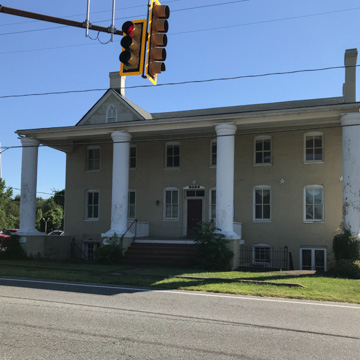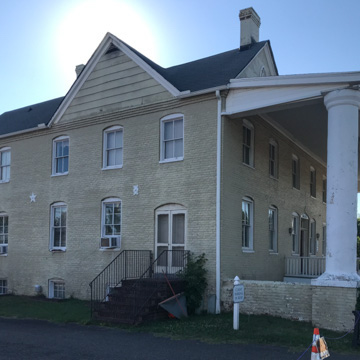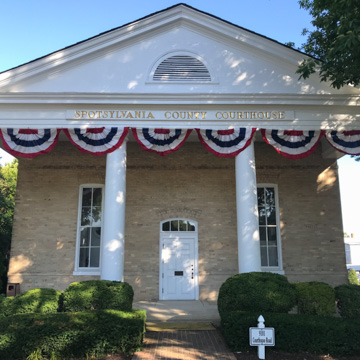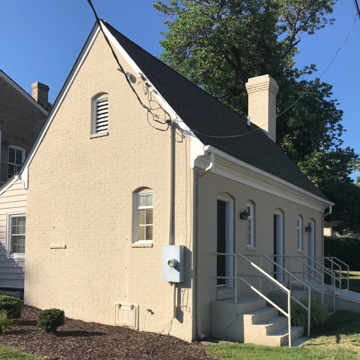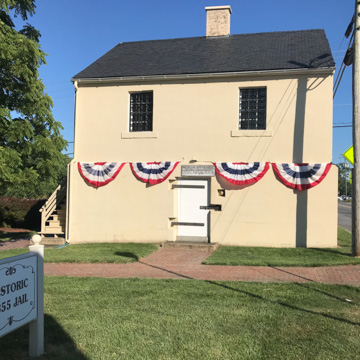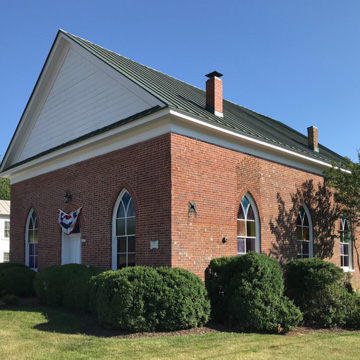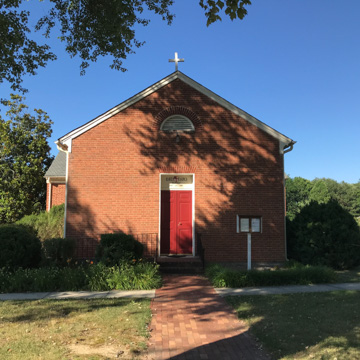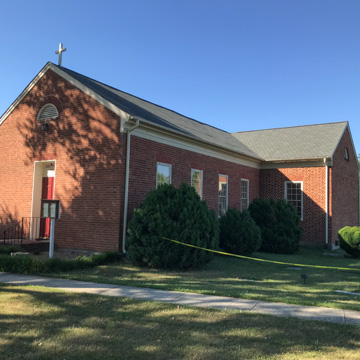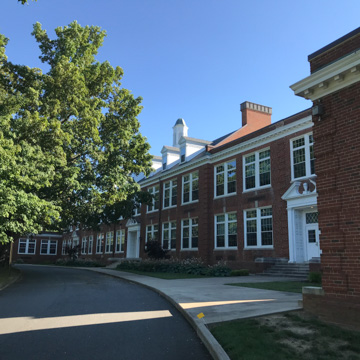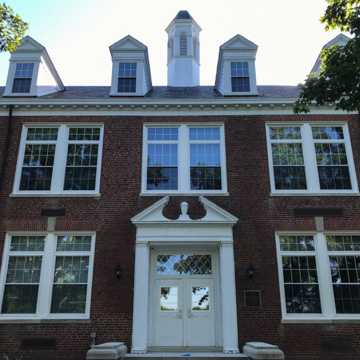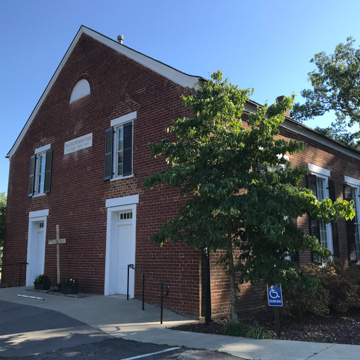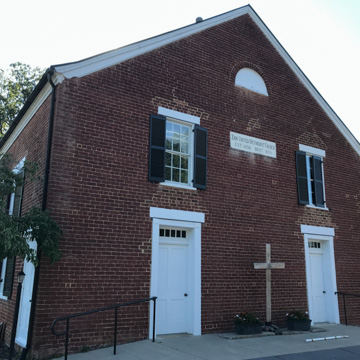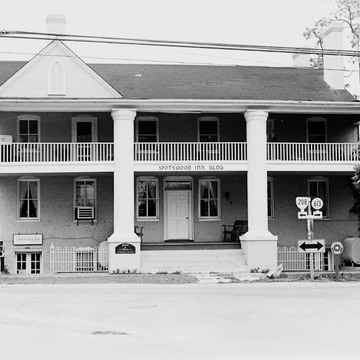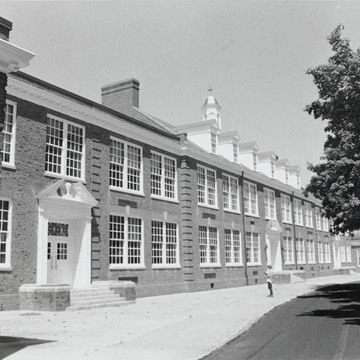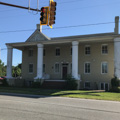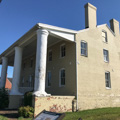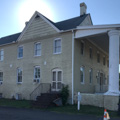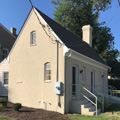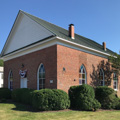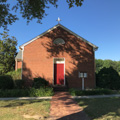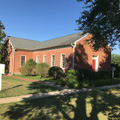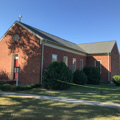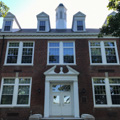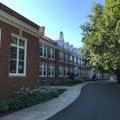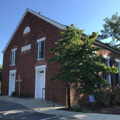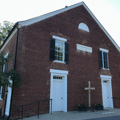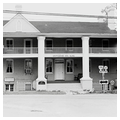A substantial ordinary has stood at this crossroads, on what was originally the major road between Richmond and Fredericksburg, since the late eighteenth century. The seat of Spotsylvania County had moved numerous times since its formation in 1722. In 1838 it was two miles from the present site, when a landowner donated to the justices of the county the “Tavern Tract,” a ten-acre site adjacent to the tavern, in order to “procure the location of the seat.” The Spotswood Inn (c. 1800; later additions) dominates the crossroads with its two-story porch with crude Doric columns. Across the road and on its own shaded square is the Spotsylvania County Courthouse (1840, Malcolm F. Crawford; 1900, B[artholmew]. F. Smith Fireproof Construction Company of Alexandria; 1964, additions), initially designed and built by Crawford, who had worked for Jefferson at the University of Virginia. The design follows the Jeffersonian format of a Roman temple with widely spaced columns. The location also brought Lee and Grant together for eight days in May 1864, resulting in one of the
Across from the courthouse on Virginia 208 stands the former Berea Christian Church (1856; Samuel Alsop, builder), now the Spotsylvania County Historical Museum, a tidy, temple-form brick structure with pointed-arched windows. Christ Episcopal Church (c. 1841) is an extremely modest brick structure on the east side of Virginia 208 adjacent to the courthouse. Both churches were heavily damaged during the Civil War fighting and served as shelters for the wounded. The former Spotsylvania High School (c. 1925, School Buildings Service, Virginia Department of Education), .2 mile south of the Historical Museum on Virginia 208, is a grand Georgian Revival statement that stretches 100 yards. The Zion United Methodist Church (1859; Virginia 208), .1 mile farther south, is a typically modest twin-entrance brick structure.
North past the courthouse .2 mile, on the north side of Virginia 208, are the Dabney house and farm (c. 1840). The three-bay brick Federal house was the only residence in Spotsylvania to survive the fighting in 1864. Across from the farm on the south side of 208 is the access road to the Confederate Cemetery (1918), which covers a low rise. Some of the dead were brought from other sites; simple headstones radiate out from an obelisk surmounted by the statue of a soldier, erected by the United Daughters of the Confederacy. Stylistically, it looks back to the 1880s.














